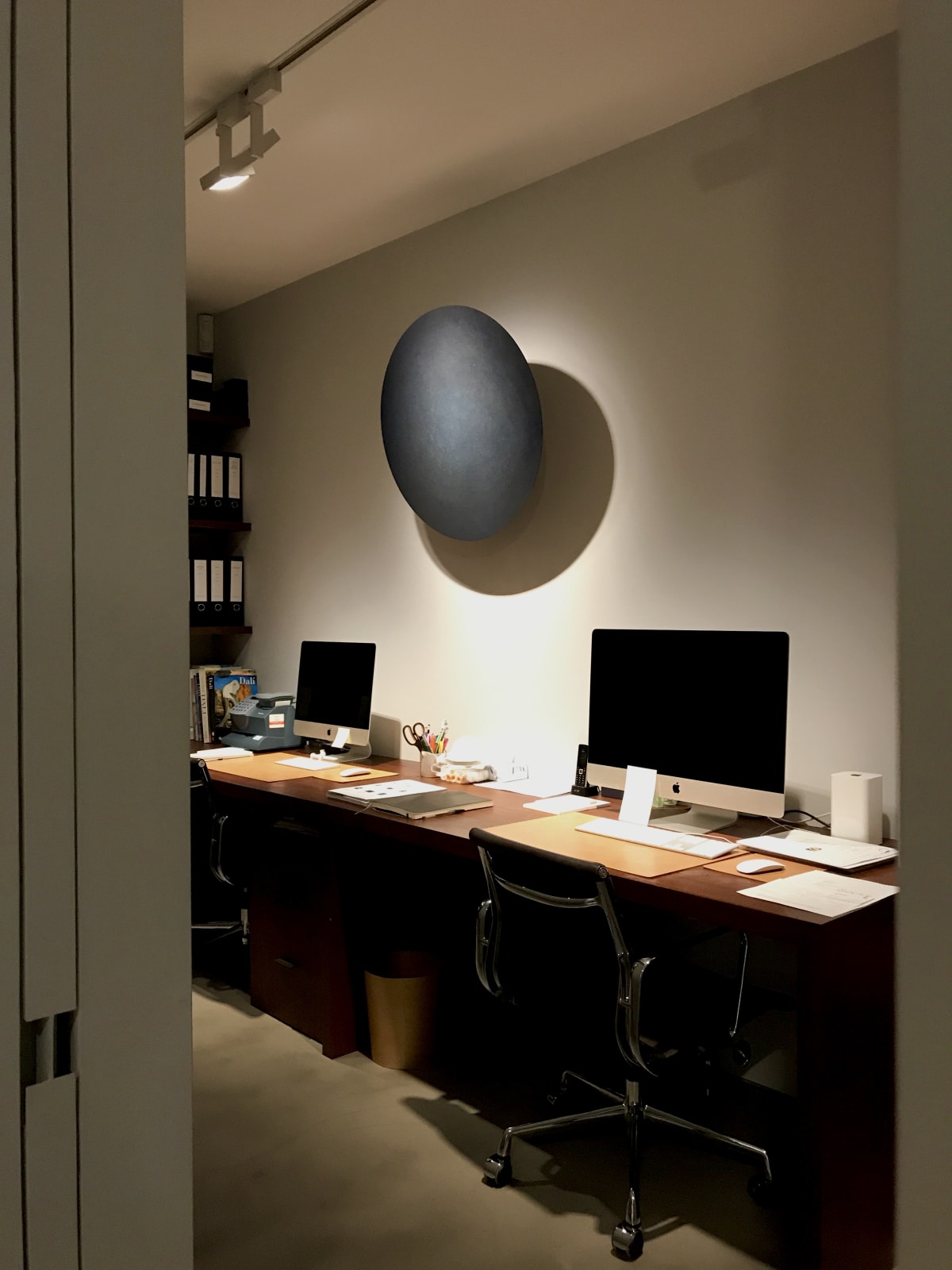Makoto OFUNE
VOID f, 2009
Powdered mineral pigments on hemp paper, mounted on wood
ø 75 cm
ø 29 ½ in
Distance of surface from wall when installed:
Top: 30.5 cm (12 ⅛ in)
Centre: 22 cm (8 ⅝ in)
Bottom: 15 cm (5 ⅞ in)
Angle: 12°
ø 29 ½ in
Distance of surface from wall when installed:
Top: 30.5 cm (12 ⅛ in)
Centre: 22 cm (8 ⅝ in)
Bottom: 15 cm (5 ⅞ in)
Angle: 12°
Copyright The Artist
Further images
Makoto Ofune’s practice combines traditional Japanese painting techniques with an abstract vocabulary, revealing the artist's quest for eternity and harmony. By creating an atmosphere that invites meditation and awareness, Ofune encourages the viewer to consider his works as elements able to transcend their status of objects and project multiple and different spatial dimensions.
In the artist's richly textured works, layers of powdered mineral pigments known as 'iwa enogu' are applied to Japanese hemp paper with 'nikawa', an animal gelatin glue. These stones are crushed by hand to a fine powder, and the resulting pigments enhance the vibrancy and depth of the original raw materials. These techniques are usually seen in 'nihon-ga' (traditional Japanese painting), but Ofune uses these jewel-toned pigments in a contemporary manner, creating atmospheric pieces that are both meditative and timeless.
Exploring transient modes of existence and ethereal elements, his works appear connected to the metamorphic flow of the human state and the natural world: the seasons, light, weather and time.
Heavily influenced by spirituality, but without a connection to any particular religion, Ofune seeks to "connect with the infinite" through his practice, placing his works in sites of cultural and spiritual significance. This has been seen in his Void series, where large-scale circular pieces have been installed at shrines and in churches. By acknowledging this harmony between his artworks and spirituality, he bridges the gap between the tangible and the intangible.
Ofune's practice plays with opposing themes: the physical and the spiritual, darkness and light, movement and stillness. However his true mastery lies not only in his technical skill, but also in the "textural atmosphere" he creates, which encourages the viewer to find harmony and wholeness.
Provenance
Artist's studio.Exhibitions
Kyoto, Institut Franco-Japonais du Kansai, Architecture et Impermanence, 2012.
London, Olivier Malingue, Makoto Ofune, 7th March - 20th May 2017, reproduced in colour p. 31.













